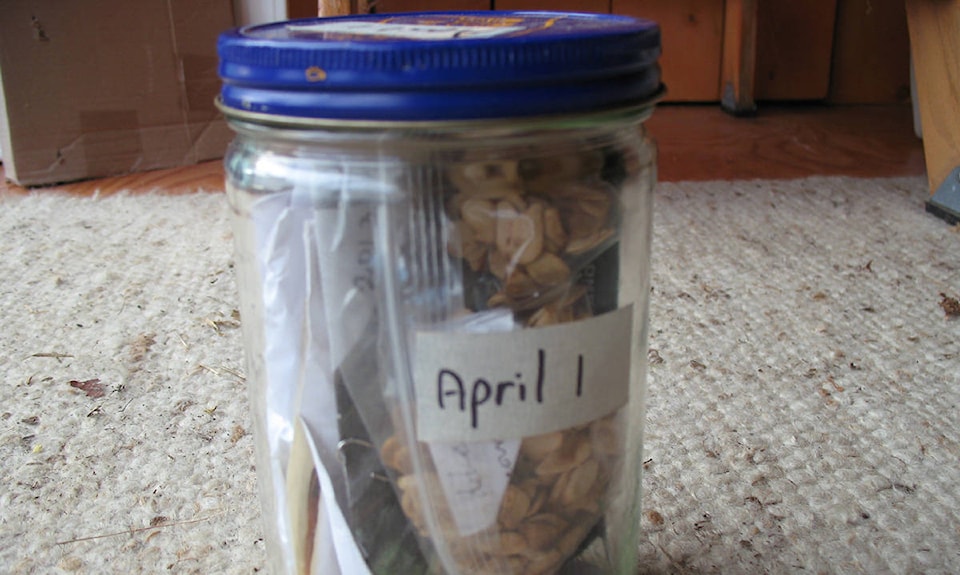By Mary Lowther
If we manage our garden with a little foresight we can save money on seeds.
Annuals like tomatoes, peas, beans, and squash can be saved the same year in which they grow, even in small gardens, and these seeds can remain viable for several years if they’re kept under cold, dry conditions. I pick the best of the crop to save for seed, being careful to note the variety so I can transfer this information to the envelope or small bag I intend to store the seeds in.
Biennial crops like cabbage, Brussels sprouts and carrots need to live through a winter before they go to seed the following year, so I treat them a little differently. I still pick the best of the crop at the end of their harvest period, carefully dig them up and move them to a bed kept for the purpose of planting various crops I intend to grow out for seed. I move them because of the convenience of clearing the bed they grew in for the next crop going into that bed. This way, all the biennials I plan on saving seed for are in the same bed and won’t get dug up and composted or — god forbid — eaten inadvertently.
When the seeds dry out I store them in the envelopes or bags on which I write the variety and year then pop them into a quart-sized glass jar labelled with the date they should be sown. I use two jars for each month — one labelled for the first of the month and the second for the 15th. These jars also contain packets of leftover seeds that didn’t get sown this year, labelled with the date I bought them. I sit down with the jars and a notebook to take inventory so I’ll know what needs to be ordered when the seed catalogs come out. This method simplifies my life because I don’t have to constantly leaf through all my seeds to decide when to plant what. (My garden plan tells me “where”.)
I save desiccant packets that come in supplement containers and use these in my jars to keep the seeds dry, but one could use milk powder: layer four tissues together; heap two tablespoons of milk powder in one corner; roll up tissues; draw the long ends together and secure with a rubber band; replace after six months. Seeds will remain viable far longer when stored this way in a cold spot just above freezing. Dry, cold seeds resist fungus and disease growth or insect damage.
Apart from saving money and re-learning how to feed ourselves come the economic meltdown, saving seeds helps retain crop diversity. In 1995 Dan Jason of Salt Spring Seeds stated “In the past five years, over 1,000 varieties of vegetables have been lost.” The association, Seeds of Diversity, connects growers who wish to cultivate and exchange their home-grown seeds with other growers. Their members include gardeners with large plots or tiny back yards, organic farmers, scientists and horticultural historians. They grow heritage and endangered plants, following techniques to maintain the purity of the stock and trade the results with other members.
Anyone can join by contacting www.seeds.ca or calling 1-866-509-7333. Seeds of Diversity publishes three magazine issues per year with gardening advice and articles on heritage varieties.
Events: Nov. 21 — Master gardener Barb Kohlman comes to the Lake Bloomers meeting, 1 p.m. at the Anglican Church at 70 Cowichan Rd. Open to the public and it’s free.
